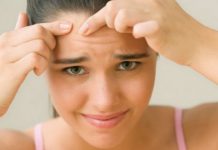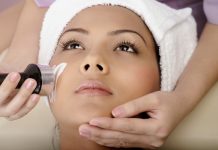Psoriasis is a fairly common skin disease and affects up to four percent of Americans. This chronic condition usually appears in the skin as cracked, red and white scaly patches.
Psoriasis is an autoimmune disease that manifests, when your immune system sends out incorrect signals. These faulty signals speed up the growth cycle of skin cells.
When a person is diagnosed with psoriasis, recovery is rare. While the causes of psoriasis are not entirely known, it is believed to be genetic in some cases.
Psoriasis is classified or graded in various severities.
Psoriasis Severity
Mild
People with mild psoriasis symptoms have up to three percent of their body affected. According to the National Psoriasis Foundation, approximately four out of five people with psoriasis are diagnosed as having mild conditions.
Moderate
Moderate psoriasis affects between three and ten percent of the body. About one out of five people are diagnosed with moderate psoriasis, notes National Psoriasis Foundation.
Severe
People who have more than ten percent of their body covered with psoriasis are considered to have a severe condition. The severity of psoriasis symptoms is also measured on how much negative impact the condition affects a person on a daily basis. The National Psoriasis Foundation added that only about eight percent of psoriasis sufferers fall into this category.
Treatment options vary depending on the severity of a person’s psoriasis. People with mild psoriasis can often use topical ointments, like over-the-counter and prescription creams.
People who suffer from moderate to severe psoriasis symptoms are prescribed creams and a combination of other treatments. The doctor may prescribe biological medications along with phototherapy, which is a light therapy that sometimes helps chronic skin conditions.
Locations on the Body
Psoriasis can show up anywhere on the body. Each area of the body that is affected by psoriasis requires various treatments. This is because the skin is different on certain parts of the body.
Ears
Psoriasis symptoms can build up in the moist skin fold behind the ears, as well as inside the ear. In severe cases, psoriasis may cause temporary hearing loss, if it blocks the ear canal. Topical steroid creams are often used around the ear area.
Eyes
Psoriasis sometimes causes the edges of the eyelids to become red and crusty. This will typically cause inflammation in the eyes and may result in dryness and discomfort.
Psoriasis in that area is rare and is usually treated with careful application of topical steroid creams. The National Psoriasis Foundation cautions that overuse of steroid creams around the eye area can lead to cataracts and glaucoma. For this reason, psoriasis needs to be frequently monitored by a physician.
Nose
Psoriasis can form along the skin folds on the side of the nose. This will cause the area of the face to become itchy and red. Psoriasis on the nose is frequently treated with low potency steroids.
Thigh and Groin Area
Sometimes thin thigh and groin are affected by psoriasis. It usually appears as a reddish-white color and can develop into small cracks on the skin.
Psoriasis in this area is easily irritated due to the friction from walking. Topical steroid creams are usually used to assist people who suffer from psoriasis symptoms in this area of the body.
Nails
About fifty percent of psoriasis sufferers will notice changes in their nails. Symptoms in the nails include pitting, which forms holes and the nails, thickening of the nails and discoloration.
Nail psoriasis can be treated with corticosteroid injections into the nails, and sometimes may require surgical removal of the affected nail.
Psoriasis Treatments
According to the Mayo Clinic, the aim of psoriasis treatment is to stop the rapid growth of skin cells. This treatment needs to be tailored for the area of the body that is specifically affected by the psoriasis. The following treatments are most frequently used in psoriasis patients:
Topical Creams
Corticosteroids are supplied in the form of ointments and special creams. The goal of these creams is to reduce the inflammation in the skin.
Two common ingredients are coal tar and salicylic acid. According to the US Food and Drug Administration, coal tar assists in slowing the growth of skin cells, while also restoring the skin’s appearance.
Salicylic acid helps the outer layer of skin, which is affected by psoriasis, to peel. It also assists in softening and removing the scales.
Many ointments and creams can be found over-the-counter, but the stronger corticosteroid creams are often prescribed by a doctor.
Complementary Approaches
A 2008 study performed by the National Center for Complementary and Alternative Medicine revealed that over thirty percent of psoriasis sufferers use alternative medicine to help treat their conditions.
Supplements
Although not scientifically proven, the following supplements have been used in the past for psoriasis:
- Milk thistle
- Oregano
- Turmeric
- Evening Primrose oil
- Fish oil
Bottom Line
The goal of both traditional and, during medicine is to improve the quality of life for people who suffer from psoriasis. This condition can cause people to feel self-conscious about the way they look and can directly affect the quality of life.
If you suffer from psoriasis symptoms, get the medical help that you need to combat this active skin condition. Just as there are many forms of psoriasis, there are an equal amount of medical approaches that can help to suppress this condition.













